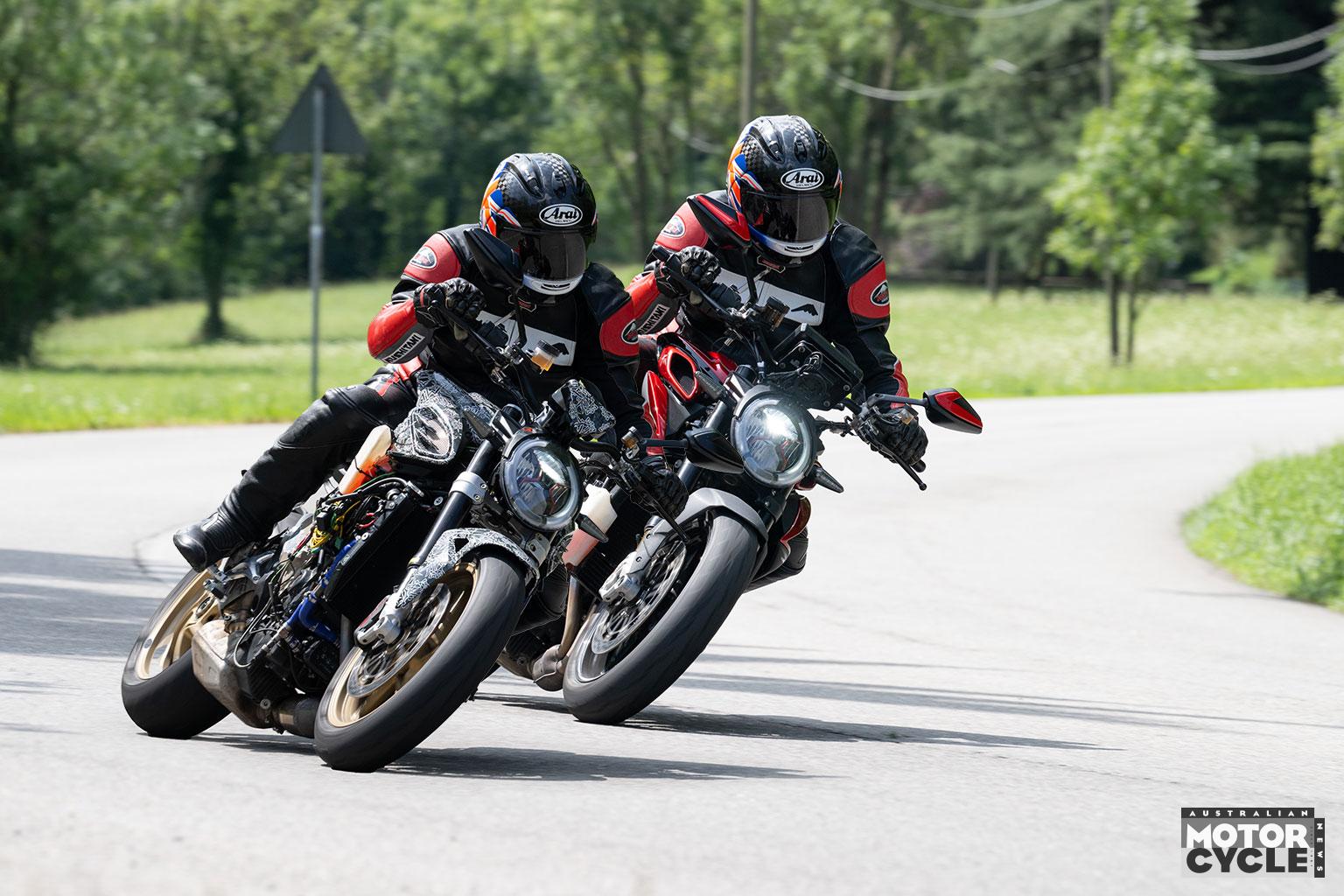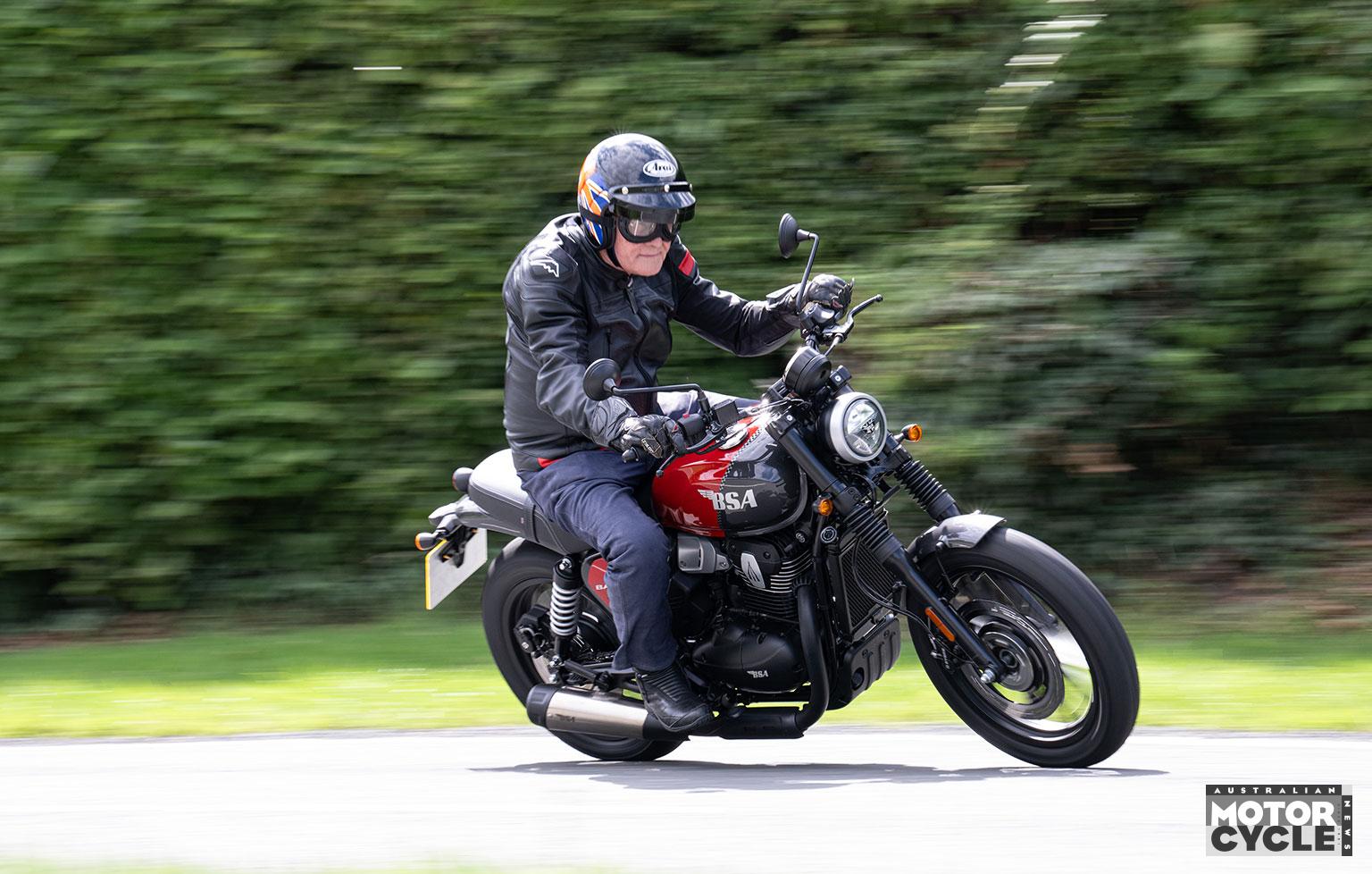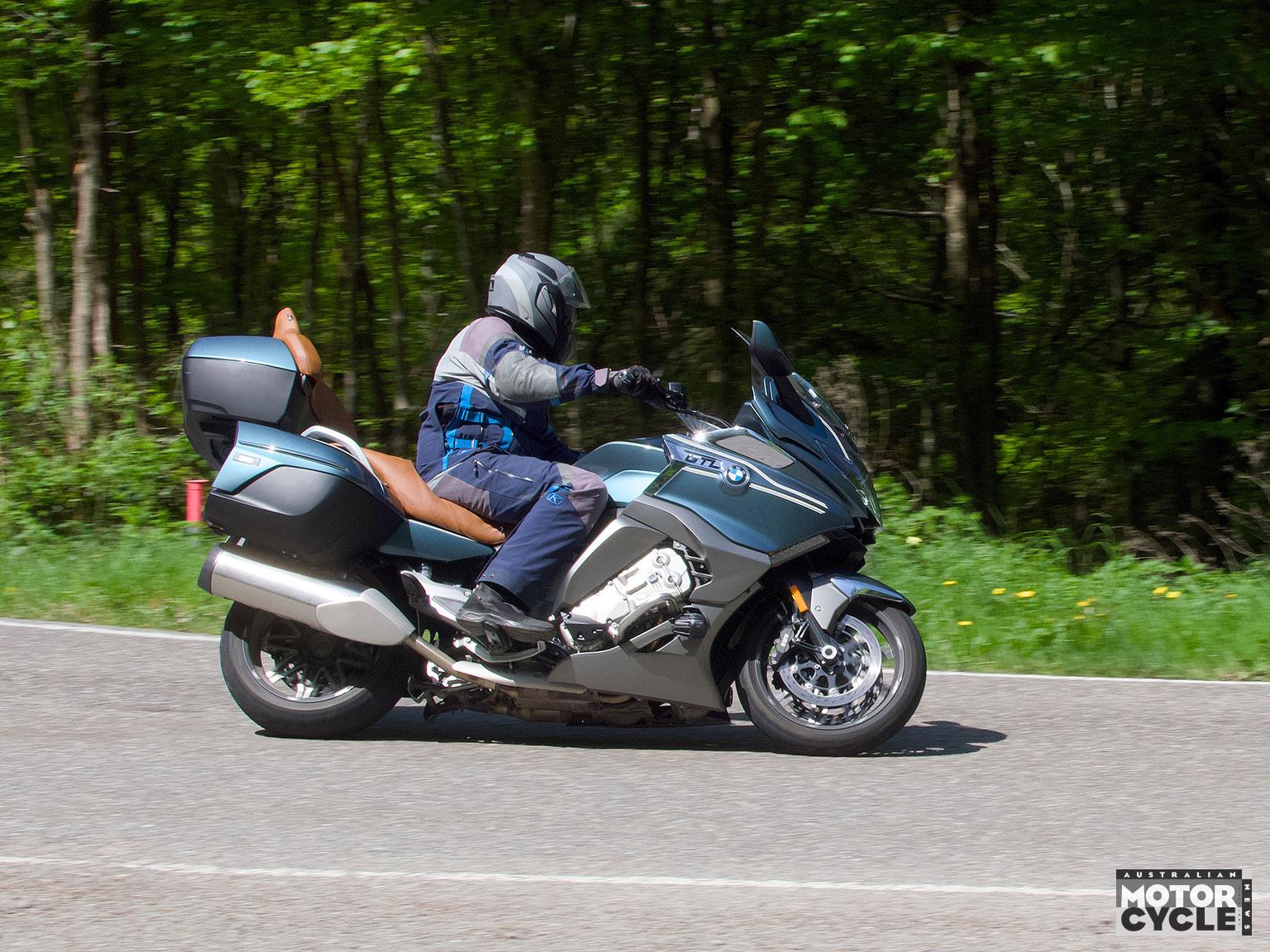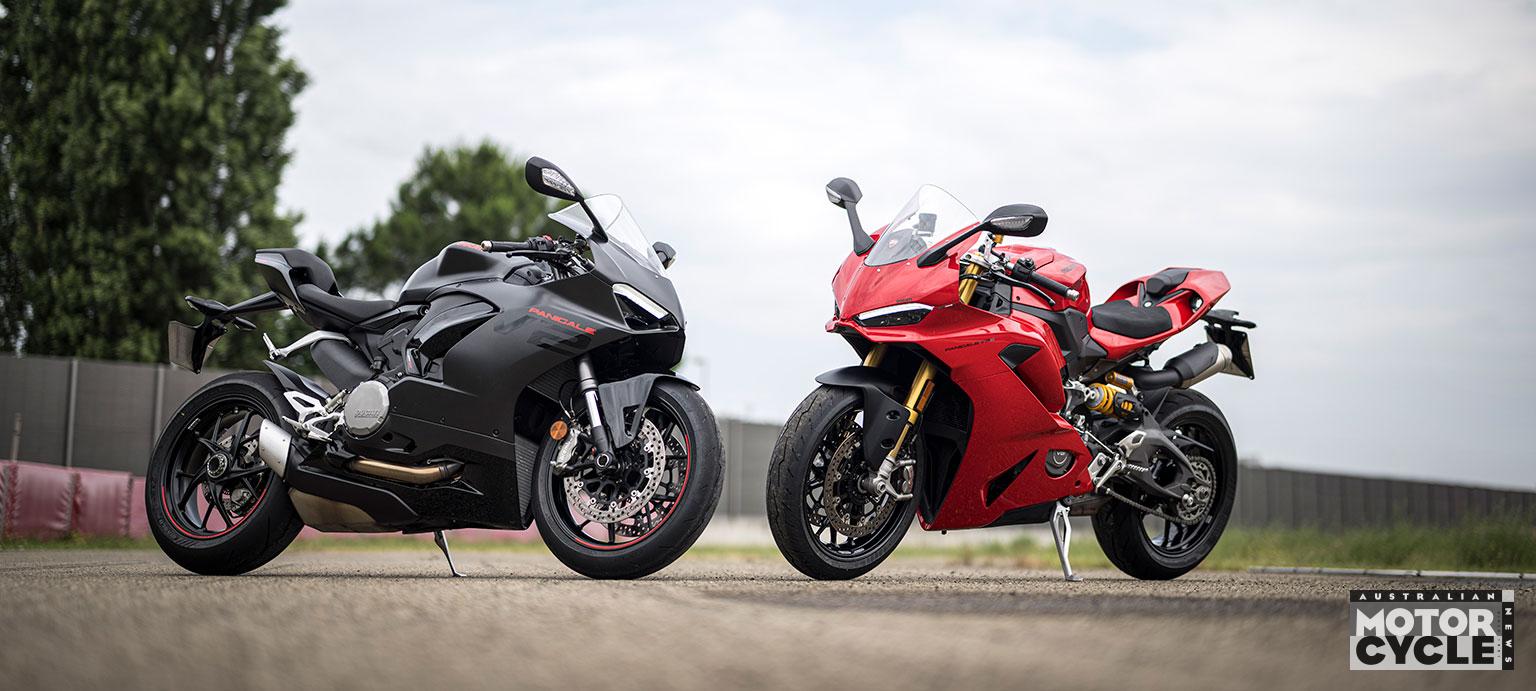We ride the track-only KTM RC 8C to get an insight into the tech that will be on offer when the Austrian manufacturer returns to the pure sportsbike segment with its upcoming 990 RC R.
If you love your trackdays or want to step into racing and have a few dollars lying around, KTM’s RC 8C is a dream machine as it is the most focused and uncompromised production motorcycle that has ever been built for the racetrack.
Why is it so good? As a track-only model, it was never planned to be homologated for the road. Free of the compromises necessary to build a road-compliant sportsbike, the Austrian manufacturer, working in partnership with race specialist Kramer Motorcycles, could focus on one design intention: cutting awesome lap times around a MotoGP track like Phillip Island. Every aspect, right down to its adjustable steering head angle and special aero wings, exists to make it quicker apex to apex. This makes for a ride unlike anything you can experience on a homologated, Euro5+, road-legal sportsbike.

Even if track-only weapons aren’t your bag, this updated RC 8C has taken on a wider significance since KTM recently outlined details of the 990 RC R that will go on sale in 2025. The 990 will be KTM’s first pure road-going sportsbike since the withdrawal of the RC8. While the two models’ engine capacities will differ and many of the RC 8C’s race details will be exchanged for required road equipment, both bikes will share similar power and torque outputs, chassis design, dimensions and geometry.
AMCN headed to one of the wildest tracks in the world, Portimao in Portugal, for a test of not only the most focused production bike in the world but the bike that will reinforce KTM’s re-entry into the sportsbike market.
Let’s have a short history lesson. The first-generation 2021 KTM RC 8C (AMCN Vol 72 No 24) featured a version of the eight-valve LC8c parallel twin normally found in the 890 Duke, albeit with a different airbox and exhaust. That original RC 8C made 95kW (128hp) and 100Nm of torque and was 6.6kW up on the standard Duke.

The 2024 iteration uses the same 890cc engine with a tune that nudges peak power up to 100kW (135hp) and, more importantly, revs to 12,000rpm instead of 10,500rpm.
One press of the race starter button on the right handlebar and the compact and sweetly balanced LC8c barks into life. The race switchgear isn’t labelled, so there’s a brief moment of adjustment while the barely silenced full titanium Akrapovic exhaust drenches the pitlane in racy vibes. Note to trackday riders visiting circuits with noise testing: KTM offers a noise-cancelling insert and an even quieter exhaust that drops the measured noise level to 98db.
Up on the reverse-pattern race shift into first gear and the clutch is now redundant thanks to a standard two-way quickshifter and auto-blipper. Cruising down Portimao’s pitlane, a quick look down at the new dash (complete with GPS and data logger) reveals the settings of the new-for-2024 rider aids. Lean-sensitive traction control has nine levels plus an off, and there’s wheelie control, which for my first session was active.
On pre-heated Pirelli slicks we could attack from the pitlane exit.
Immediately you feel the RC 8C’s lightness and sharpness you won’t find on even the more focused road-going sportsbike. The KTM has a wide spread of torque and in the softer fuel map – there’s only two – the power delivery is reasonably easy going. It’s not super-soft, just forgiving, allowing you to ride that smooth and urgent midrange rather than immediately having to switch on the more manic revs and power.

Exiting the last fast turn in fourth gear, however, I dabbed down on the seamless race-pattern quickshifter into fifth before crossing the famous start-finish line and grabbing top. This is where you feel the difference of the new, higher-revving engine and its extra serving of power. The new bike is more willing to rev than the old; you can hold on to the gears longer, rev the engine harder – and on open sections of track the new RC 8C is noticeably faster. It’s not crazy arm-stretching power like a 200+hp Ducati Panigale or BMW M 1000 RR, but with only 142kg (dry) to accelerate, it’s certainly lively.
Both engine maps feel similar once the throttle is beyond 30 percent open – it’s the initial pick-up that changes – and the second map is sharper in this regard. The new over-rev facility and the map’s aggressive power delivery allow you to push for lap times, driving harder between apexes as you hold on to gears longer.
The LC8c unit is slim, light and, above all, flexible. Usable drive lower down and through the midrange makes it easy to ride when you are learning a track or riding tired at the end of a trackday, and its free-revving top-end delivers when you’re hunting down those superbikes or chasing a lap time.
Harnessing all this urgency is a Marcus Kramer-inspired, multi-adjustable chassis that’s race-ready from the crate. The fuel tank is where you’d expect to find the rear subframe and an air-box is where there’d normally be a fuel tank.
Almost every part of the chassis is adjustable to optimise and personalise either frame geometry or rider ergonomics, including the steering head angle and fork offset, as well as the high-end WP Apex Pro suspension.

Both seat height and ride height can be changed, along with the handlebar position and even the brake-lever bite point. A ‘Ready to Race’ spec also includes Brembo Stylema calipers and 290mm discs, which are a smaller-diameter than many roadbikes’ as they only have to stop a light bike – and they are among the strongest brakes I have ever used. Lightweight forged aluminium Dymag wheels and Pirelli slicks are standard along with lightweight fibreglass bodywork – used instead of carbon fibre because it’s cheaper to replace.
You might expect that a bike weighing the same as a road-legal 125cc commuter will be tiny, but it isn’t. It’s light but also spacious. The adjustable ’bars are wide and racy but not radical. There is enough room between the ’pegs and the seat to stop knees seizing. The screen is tall enough to get in behind and the whole cockpit is roomier than a conventional supersport 600’s, perhaps even roomier than some superbikes.
Crucially, the RC 8C is 30kg lighter than the race-ready Yamaha GYTR YZF-R6 and around 50kg lighter than a road-legal Panigale V2. Those are impressive figures and on the move you immediately feel that lightness. Those undersized discs and light Dymag rims minimise both unpsrung mass and steering inertia to help make the bike flickable in a way no road machine can match. Until you re-calibrate to its lightning rate of turn, it’s very easy to tip in way too early.
But don’t be fooled into thinking the RC 8C is a flighty beast because it’s as stable in high-speed corners as much heavier sportsbikes I’ve ridden at Portimao – and far more accurate.

Those distinctive aero wings probably contribute, so too the adjustable Hyper Pro steering damper. Despite my best efforts to destabilise the RC with my clumsily shifting bodyweight, I couldn’t provoke a moment of protest from the unflappable chassis.
The first-generation RC 8C didn’t come with rider aids but now lean-sensitive traction control is standard. There’s a wet setting optimised for wet tyres, and another setting designed specifically for slick rubber, while you also have the option to turn off the TC entirely.
With only 100kW on tap and a chassis that feeds you with so much feel and grip, TC is a bonus rather than a necessity. For the final session of our test, though, I switched it on and enjoyed tailoring its intervention level to the changing needs of wearing tyres and how I wanted to ride.
For club and national racers, the adjustability of the chassis and the electronics will be invaluable. For simply enjoying the RC 8C on a sunny trackday, however, it’s far less critical as the rider is given such forensic feel. There’s no vagueness or moments of uncertainty. The bike tells you exactly what the tyres are doing.
The anti-wheelie control is either on or off, and around the undulations of Portimao it was a helpful tool. The combination of torque and lightness meant the front Dymag wanted to lift over the track’s rollercoaster crests.
As with the TC, when the system intervenes, it’s soft and tapered.

The RC 8C is one of those rare bikes that builds your confidence with every lap. It helps you push harder and feel what the tyres are doing in relative safety. I made a slight change to the rear shock’s setting via the remote preload as I’m a little on the heavy side, but otherwise I wouldn’t want to touch anything.
As you’d expect from such a high-end motorcycle, the level of finish is high and quality components are used throughout. The five-inch TFT display comes with an integrated data recording and GPS function. Live lap times are displayed, meaning you can see if you are down or up on sectors as you ride your real-life video game. Speed, lines, lap times, throttle and other engine data can be logged and later analysed.
What helps makes the RC 8C special is a level of attention to detail you normally only find on a well-sorted racebike. Oil and fuel drain screws, for example, are lockwired, as are the oil filter and even the caliper bolts, and there’s a covering of crash protection on the spindles, frame, fuel tank – even the swingarm has small protector plates behind the race ’pegs so the ’pegs don’t dig into it in a crash. Rubber steering stops prevent the frame getting damaged on full lock, a brake-lever guard is standard and there is even a one-touch rain light at the rear.
The 16-litre fuel tank is at the rear and is accessible via the cap just below where a conventional pillion seat would be. Sixteen litres should be enough for a few track sessions, 130-odd kays, and for those who want to go racing there’s a clever drain plug at the bottom of the tank, which allows you to drain the fuel completely and therefore measure the precise amount of petrol before each race.

The RC 8C stops, turns and goes like a factory-built racebike because it is a factory-built racebike. The steering is blissfully light and accurate, you can get on the power incredibly early, and the corner speeds and lean angles it can carry are breathtaking.
Thankfully, it doesn’t require the skills of Jack Miller. It’s easy to ride, has a forgiving chassis, an easy power delivery and an abundance of helpful midrange torque. There’s now extra safety from the new lean-sensitive rider aids, and the relatively roomy riding position means it can accommodate a variety of sizes.
Racers will welcome the increase in rpm and performance, especially on fast tracks.
They will also dive deep into the multi-adjustable chassis to create a track weapon that meets their specific demands.
Its European price of around $A70k means the RC 8C is only for the wealthy or extremely committed. None are coming Down Under but 10 of the 2023 RC 8C, as seen on display at the Sydney Motorsport Park round of ASBK, are available to order for $59,900. If you can wait a while the road-going 990 RC R is due next year.
So, to sum up, the RC 8C gives us an indication of what to expect from KTM’s first sportsbike for many years. And we cannot wait.
WHO IS KRAMER MOTORCYCLES?

Created by Marcus Kramer, Kramer Motorcycles started production in Germany back in 2009 building prototype racebikes using KTM engines. The company went public in 2014, with the EVO-1 followed by the EVO-2 using the KTM single-cylinder engine as its basis.
It still produces the single-cylinder 690 EVO2-R, which weighs just 125kg and makes 63kW (85hp). But it also has two twin-cylinder models in its line-up, the GP2-R and the GP2-RR, the latter the sister bike to the RC 8C. The Kramer is essentially the KTM RC 8C without the wings and different fueling, allowing racers to personalise the mapping further.
SPECIFICATIONS

KTM RC 8C
ENGINE
Capacity 889cc
Type Parallel-twin, DOHC, four valves per cylinder
Bore & stroke 90.7mm x 68.8mm
Compression ratio 11.5:1
Cooling Liquid
Fueling EFI, 48mm Dell’Orto throttle body
Transmission Six-speed
Clutch Wet, multi-plate, anti-hopping
Final drive Chain
PERFORMANCE
Power 100kW (135hp) @ 12,000rpm (claimed)
Torque 100Nm @ unknown rpm (claimed)
Top speed 265km/h (estimated)
Fuel consumption 10.5L/100km
ELECTRONICS
Type Bosch
Rider aids Cornering traction control, anti-wheelie and braking strategies
Rider modes Two maps
CHASSIS
Frame material Tubular steel
Frame type Trellis
Rake Adjustable
Trail Adjustable
Wheelbase 1400mm
SUSPENSION
Type WP
Front: 43mm XACT Pro 7543 USD fork , fully adjustable, 120mm travel
Rear: Apex Pro 7746 monoshock, fully adjustable, 120mm travel
WHEELS & BRAKES
Wheels Dymag
Front: 17 x 3.5
Rear: 17 x 6.0
Tyres Pirelli SC1 slick
Front: 120/70R17
Rear: 180/55R17
Brakes Brembo, no ABS
Front: Twin 290mm discs, four-piston Stylema calipers
Rear: Single 230mm disc, twin-piston caliper
DIMENSIONS
Weight 142kg (dry, claimed)
Seat height 820mm (adjustable)
Width Not given
Height Not given
Length Not given
Ground clearance 191mm
Fuel capacity 16L
SERVICING & WARRANTY
Servicing
Minor: 30 hours
Major: 60 hours
Warranty Legal only
BUSINESS END
Price Not applicable
(AU/NZ couldn’t secure units)
Colour options White/orange
CONTACT
www.ktm.com/en_au











